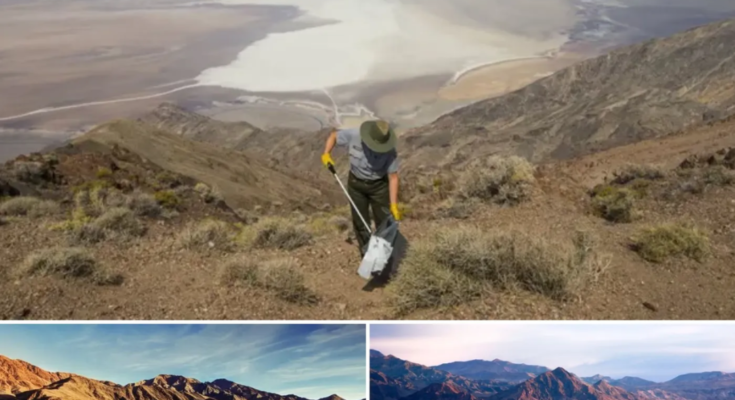The Death Valley National Park in California is on the verge of reaching a devastating temperature of over 54.4°C in the coming days due to an unprecedented heatwave. This extreme temperature, if confirmed, could break records, placing this region at the center of Earth’s hottest ever recorded temperatures. The Death Valley is no stranger to extreme weather, with its arid conditions making it one of the hottest places on Earth. Known for its bone-dry air and harsh terrain, the valley has a long history of extreme conditions, but these upcoming temperatures could set an even more dangerous precedent.
Record Heat: A Global Crisis Unfolding

June 2023 marked the hottest month on record, but experts predict July could surpass even these shocking figures. The World Meteorological Organization (WMO) reports that the month began with the hottest week ever recorded on Earth. Over 100 million Americans are expected to endure excessive heat, with many already facing life-threatening conditions. The National Weather Service is urging the public to stay hydrated and avoid strenuous outdoor activities as temperatures soar. The heatwave has already begun to take a toll on public health, with many suffering from dehydration, heatstroke, and even burns from the scorching heat.
Why Death Valley is the Epicenter of Extreme Heat
Summer temperatures in Death Valley often hover around 48.9°C, primarily due to the surrounding mountains trapping hot air in the narrow valley basin. However, this week, the temperature could climb beyond the 54.4°C mark, a new global heat record, according to Scientific American. Cities like Phoenix, Arizona, are already seeing temperatures exceeding 43.3°C, and residents are experiencing second-degree burns from touching heated pavement. These unbearable conditions are forcing many businesses and schools to close and outdoor activities to be canceled, as the heat becomes too intense to handle.
Global Heatwave: A Worldwide Emergency

The United States is not alone in facing this unrelenting heat. Europe, the Middle East, southeastern Turkey, and Morocco are also suffering from extreme temperatures. The world’s emission of carbon dioxide and methane has significantly accelerated climate change, resulting in more frequent and prolonged extreme weather events. In Uruguay, consecutive years of drought and high temperatures have caused the country’s only freshwater reservoir to nearly run dry, leaving over half of the population without access to clean drinking water. This pattern is repeating itself in other regions, with water scarcity becoming a growing global crisis. Farmers across the world are already grappling with diminishing yields, and more severe droughts are expected to devastate agricultural production in many countries.
Climate Change: The Global Impact on Agriculture and Water Supply
Regions in northern Argentina and southern Patagonia are also feeling the effects of this heatwave. In Iraq, the lack of water has severely impacted both agriculture and food production. According to Petteri Taalas, the Secretary-General of the World Meteorological Organization, the frequency of extreme weather events is increasing as the planet warms. These changes are affecting human health, ecosystems, agriculture, energy, and water supply systems. Taalas stresses the urgent need to reduce greenhouse gas emissions to mitigate the worst consequences of these changes. The direct consequences of climate change are already disrupting lives and economies across the world, highlighting the immediate need for global cooperation to prevent further damage.



